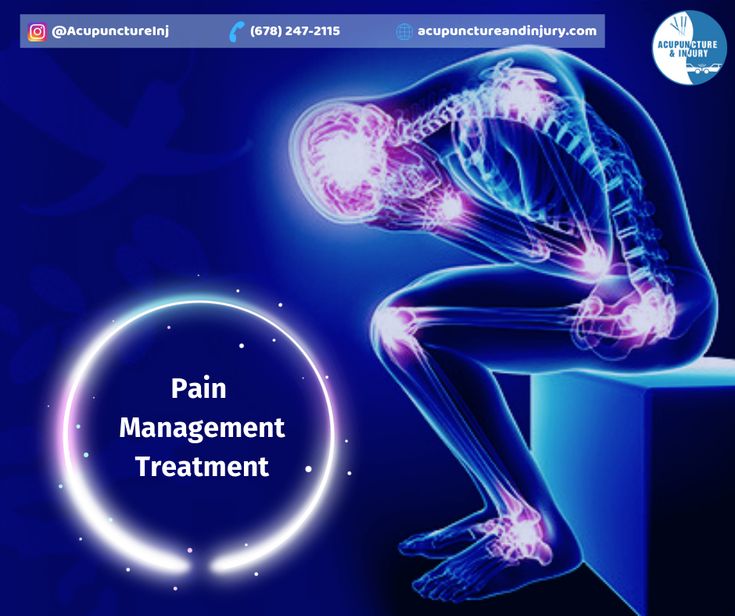
Table of Contents
Pain Management Strategies for Nurses
Introduction
Pain. A universal experience, yet intensely personal. It can manifest as a dull ache, a searing burn, or a throbbing throb. Regardless of its form, pain disrupts our lives, hindering movement, stealing sleep, and casting a shadow over our well-being.
For nurses, understanding and effectively managing pain is a cornerstone of compassionate care. Pain isn’t just a physical sensation; it can trigger a cascade of emotional and psychological distress. Anxiety, fear, and frustration often accompany the physical discomfort, significantly impacting a patient’s quality of life.
The Ethical Imperative:
Effective pain management isn’t just good practice; it’s an ethical obligation. Patients have the right to receive treatment that alleviates their suffering. Nurses play a crucial role in achieving this by accurately assessing pain, advocating for appropriate interventions, and providing compassionate support throughout the journey.
Beyond Medications:
The fight against pain isn’t a one-dimensional battle. A multimodal approach, employing both pharmacological (medication) and non-pharmacological strategies, is key to achieving optimal pain control. Nurses are at the forefront of implementing this approach. They conduct comprehensive pain assessments, tailor interventions to individual needs, and educate patients on self-management techniques.
This article delves deep into the world of pain management for nurses. We’ll explore the intricacies of pain assessment, the various tools used to gauge its intensity and characteristics. We’ll delve into the pharmacological arsenal available for pain relief, understanding how different medications work and their potential side effects. But the focus extends beyond medications. We’ll explore the power of non-pharmacological interventions like physical therapies, relaxation techniques, and even environmental modifications.
This journey will equip nurses with the knowledge and skills to effectively combat pain, ensuring their patients experience not just physical comfort, but also a sense of emotional well-being and a swifter path to recovery.

Understanding Pain Assessment
Pain, like a cunning foe, wears many masks. Before we can effectively combat it, we must first understand its nature. This section dives into the different types of pain and the tools nurses use to assess its intensity and characteristics.
The Many Faces of Pain:
- Acute Pain: A sudden, short-term pain usually associated with tissue injury or illness. Think post-surgical pain or a broken bone. It serves as a warning signal from the body, prompting us to seek treatment and prevent further damage.
- Chronic Pain: A persistent pain lasting for weeks, months, or even years. It can be independent of the initial injury and is often more complex to manage. Examples include arthritis pain or chronic headaches.
- Nociceptive Pain: Arises from damage to tissues, activating pain receptors. The throbbing pain after a sprain is a classic example.
- Neuropathic Pain: Results from damage to the nervous system itself. It can manifest as burning, tingling, or shooting sensations and often feels different from nociceptive pain.
The Art of Pain Assessment:
Accurate pain assessment is the foundation of effective pain management. Nurses rely on a multi-pronged approach, utilizing various tools to paint a complete picture of the patient’s experience.
Verbal Self-Reporting Scales:
- Visual Analog Scale (VAS): A simple line with zero representing “no pain” and ten representing “worst pain imaginable.” Patients mark a point along the line to indicate pain intensity.
- Numerical Rating Scale (NRS): A simpler version of the VAS using a 0-10 scale where 0 is “no pain” and 10 is “worst pain ever.”
Behavioural Assessment Scales:
These tools are particularly useful for patients who are unable to communicate verbally, such as infants or patients with cognitive impairment.
- FLACC (Face, Legs, Activity, Cry, Consolability): Assigns scores based on facial expressions, leg movements, changes in activity levels, crying behaviours, and ease of consolability.
- CRIES (Cry, Requires Oxygen, Increased Workload, Facial Expression, Sweat): Similar to FLACC, it focuses on observable behaviours in neonates and infants.
Physiological Indicators:
Though not always definitive, certain physiological changes can hint at the presence or intensity of pain. These include:
- Increased heart rate and respiratory rate
- Elevated blood pressure
- Diaphoresis (sweating)
- Dilated pupils
- Restlessness or changes in sleep patterns
Beyond the Numbers:
Pain perception is a complex process influenced by various factors:
- Age: Children and older adults may express pain differently.
- Culture: Cultural beliefs and attitudes towards pain can affect how patients express and cope with it.
- Anxiety and Fear: These can heighten pain perception.
- Previous Experiences: Past experiences with pain can influence how a patient interprets and reacts to current pain.
The Ongoing Battle:
Pain is a dynamic experience, and its intensity can fluctuate over time. Therefore, ongoing and reassessment is crucial. Regularly checking in with patients, using pain assessment tools at appropriate intervals, and remaining attentive to nonverbal cues allows nurses to tailor interventions and ensure optimal pain control.
Pharmacological Pain Management

Pain medications, while powerful tools, require a nuanced understanding to ensure their safe and effective use. This section explores different classes of pain medications, principles of administration, and considerations for specific patient populations.
The Opioid Warriors:
- Mechanism of Action: Opioids bind to opioid receptors in the central nervous system, blocking pain signals from reaching the brain.
- Benefits: Effective for moderate to severe pain.
- Risks and Side Effects: Constipation, drowsiness, nausea and vomiting, respiratory depression (serious and potentially life-threatening). Addiction and dependence are also potential risks with long-term use.
- Monitoring: Nurses closely monitor patients for side effects, particularly respiratory depression. Pulse oximetry is often used to monitor oxygen saturation levels.
The Anti-Inflammatory Infantry (NSAIDs):
- Mechanism of Action: Reduce inflammation and pain by inhibiting the production of prostaglandins, chemicals involved in the pain process.
- Uses: Effective for mild to moderate pain, especially pain with an inflammatory component (e.g., arthritis).
- Contraindications: Patients with certain medical conditions like peptic ulcers, bleeding disorders, or kidney problems may not be suitable candidates for NSAIDs.
- Potential Side Effects: Gastrointestinal upset, heartburn, increased risk of bleeding.
The Adjuvant Allies:
- Function: These medications, typically used for other conditions, can be used alongside traditional pain medications to enhance their effectiveness or address specific pain characteristics. Examples include:
- Antidepressants: Certain antidepressants can help manage neuropathic pain.
- Anticonvulsants: Also used for seizure control, some anticonvulsants can be helpful for specific types of neuropathic pain.
- Importance: Adjuvants can play a crucial role in managing complex pain syndromes that are not adequately controlled by other medications alone.
The Art of Administration:
Safe and effective medication administration for pain relief requires a multi-faceted approach:
- Routes of Administration: Medications can be administered orally, intravenously (IV), or through other routes like patient-controlled analgesia (PCA) pumps. The choice of route depends on the severity of pain, patient factors, and medication type.
- Titration: Starting with a low dose and gradually increasing it until pain is controlled helps minimize the risk of side effects.
- Breakthrough Pain Management: Even with effective pain management plans, patients may experience occasional spikes in pain (breakthrough pain). Nurses need to be prepared to address breakthrough pain promptly with appropriate rescue medications.
- Documentation: Accurate documentation of administered medications, pain scores, and patient responses is crucial for monitoring progress and ensuring patient safety.
- Patient Education: Educating patients about their medications, potential side effects, and safe usage is essential for promoting adherence and optimal pain management.
Special Considerations:
Pain management strategies need to be tailored to specific patient populations:
- Children: Dosage adjustments and different formulations (e.g., liquid medications) are often needed for children.
- Older Adults: Age-related changes in metabolism and potential for drug interactions necessitate careful medication selection and monitoring.
- Patients with Renal or Hepatic Dysfunction: Dosage adjustments or alternative medications may be required for patients with impaired kidney or liver function to avoid medication build-up and potential toxicity.
By understanding the different classes of pain medications, their risks and benefits, and the principles of safe administration, nurses can become effective allies in a patient’s fight against pain.
Non-Pharmacological Pain Management Strategies for Nurses

The fight against pain isn’t a one-size-fits-all battle. While medications play a vital role, non-pharmacological approaches offer a powerful arsenal of tools for nurses to complement pain management strategies. These techniques not only target pain relief but can also promote relaxation, improve mood, and enhance a patient’s overall sense of well-being.
The Power of Non-Pharmacological Interventions:
Non-pharmacological approaches offer several benefits:
- Reduced reliance on medications: This can minimize the risk of side effects and potential dependence associated with certain medications.
- Enhanced patient autonomy: Patients can actively participate in their pain management plan, fostering a sense of control and empowerment.
- Improved coping mechanisms: These techniques can equip patients with tools to manage pain not just during hospitalization but also in the long term.
A Multifaceted Toolbox:
The world of non-pharmacological pain management is brimming with diverse techniques, each offering unique benefits:
- Physical Therapies:
- Heat/Cold Therapy: Applying heat or cold packs can help reduce inflammation, muscle spasms, and pain.
- Massage Therapy: Massage promotes relaxation, improves blood circulation, and can alleviate muscle tension and pain.
- Psychological Interventions:
- Cognitive-Behavioral Therapy (CBT): CBT helps patients identify and modify negative thought patterns that can exacerbate pain perception.
- Distraction: Engaging in activities that divert attention from pain, like listening to music or watching movies, can offer temporary relief.
- Guided Imagery: This technique involves creating mental images of relaxing and peaceful scenes, promoting relaxation and reducing pain perception.
- Complementary therapies: While research on their efficacy is ongoing, some patients find relief with techniques like:
- Acupuncture: Involves inserting thin needles at specific points on the body to stimulate nerves and influence pain pathways.
- Aromatherapy: Uses essential oils diffused in the air or applied topically to promote relaxation and potentially reduce pain perception.
- Music Therapy: Listening to calming music can reduce anxiety, promote relaxation, and elevate mood, leading to improved pain tolerance.
- Environmental Modifications: Simple adjustments like noise reduction, dimming lights, or providing comfortable positioning can significantly improve a patient’s experience and indirectly contribute to pain management.
The Art of Individualization:
The key to successful non-pharmacological pain management lies in tailoring the approach to the individual patient. Nurses should consider a patient’s preferences, medical history, cultural background, and physical capabilities when recommending specific techniques. Open communication and collaboration with patients are essential to creating a personalized pain management plan that leverages the power of non-pharmacological interventions.
Post-Operative Pain Management Strategies for Nurses
Surgery, while often necessary for healing, can leave a trail of pain in its wake. Managing post-operative pain presents unique challenges that require a strategic and multifaceted approach.
The Post-Operative Pain Landscape:
Several factors contribute to the intensity of postoperative pain:
- Tissue Injury: The surgical procedure itself causes tissue damage, triggering pain signals.
- Inflammation: Inflammation around the surgical site can further intensify pain.
- Anxiety and Fear: The unfamiliar post-operative environment and apprehension about recovery can amplify pain perception.
The Multimodal Approach: A United Front
Given the complexity of postoperative pain, a multimodal approach is essential. This strategy combines various pain management techniques, including:
- Pharmacological Interventions: Opioids, NSAIDs, and adjuvants may be used depending on the severity and type of pain.
- Non-Pharmacological Techniques: Heat/cold therapy, massage, relaxation techniques, and early mobilization can significantly improve post-operative pain management.
The Nurse: A Pillar of Post-Operative Pain Management
Nurses play a crucial role in implementing and monitoring post-operative pain management plans. They are at the bedside, readily available to assess pain levels, provide interventions, and educate patients:
- Medication Administration: Nurses administer pain medications as ordered, following safe administration principles such as titration and monitoring for side effects.
- Non-Pharmacological Interventions: Nurses may assist with applying heat/cold therapy, perform gentle massage techniques, or guide patients through relaxation exercises.
- Patient Education and Self-Care Strategies: Educating patients about pain management techniques, proper use of pain medication, and deep breathing exercises empowers them to participate in their recovery actively. Nurses also instruct patients on recognizing signs of infection, a potential complication that can worsen pain.
By effectively implementing a multimodal approach and providing ongoing support, nurses can significantly reduce post-operative pain, promoting faster healing and a smoother recovery journey for their patients.
Compassionate Care in Pain Relief

Pain isn’t just a physical sensation; it’s a deeply personal experience interwoven with emotions like fear, anxiety, and frustration. In the fight against pain, wielding the weapon of compassionate communication is as crucial as any medication.
Beyond Words:
Effective pain management goes beyond simply administering medications. Nurses who practice patient-centred care take the time to listen to their patients’ concerns and experiences truly. Active listening involves not just hearing words but also paying attention to nonverbal cues like facial expressions and body language.
Empathy: The Bridge of Understanding:
Empathy allows nurses to connect with patients on an emotional level, acknowledging their suffering and validating their pain experience. Simple phrases like “I understand this must be difficult” or “It sounds like you’re in a lot of pain” can go a long way in building trust and fostering a sense of support.
Addressing the Emotional Toll:
Pain can negatively impact a patient’s emotional well-being. Nurses can address these concerns by:
- Normalizing Emotions: Helping patients understand that feeling anxious or frustrated alongside pain is normal.
- Providing Emotional Support: Offering a listening ear and emotional reassurance can significantly improve a patient’s coping ability.
- Promoting Relaxation Techniques: Teaching patients simple relaxation techniques like deep breathing or guided imagery can empower them to manage emotional distress.
By fostering a compassionate environment, employing active listening, and acknowledging the emotional aspects of pain, nurses can become powerful allies in a patient’s journey towards healing. Pain relief isn’t just about managing physical symptoms; it’s about offering comfort, support, and a sense of hope for a brighter and less painful tomorrow.
Conclusion
This exploration has delved into the complexities of pain management, equipping nurses with the knowledge and skills to combat this relentless foe. The key principles guiding this battle are clear:
- Comprehensive Pain Assessment: Understanding the nature and intensity of pain through various assessment tools is the cornerstone of effective management.
- Multimodal Approach: Combining pharmacological and non-pharmacological interventions provides a holistic approach to pain relief, catering to individual needs.
- Individualized Care Plans: A “one-size-fits-all” approach doesn’t exist. Tailoring pain management strategies to each patient’s unique circumstances is paramount.
The fight against pain is a continuously evolving battleground. Research in pain management strategies is constantly yielding new advances and insights. Nurses, as essential healthcare providers, have a responsibility to stay up-to-date on evolving practices and best practices.
Beyond Treatment: Advocacy and Well-being
Nurses are powerful advocates for their patients. They play a crucial role in ensuring patients receive effective pain management and have a voice in their treatment plans. Open communication and collaboration with patients empower them to participate actively in their pain management journey.
Ultimately, effective pain management isn’t just about alleviating physical discomfort; it’s about promoting a patient’s overall well-being. By wielding the tools of comprehensive assessment, multimodal interventions, and compassionate care, nurses can be instrumental in ensuring their patients not only experience pain relief but also embark on a smoother road to recovery and a brighter future.





